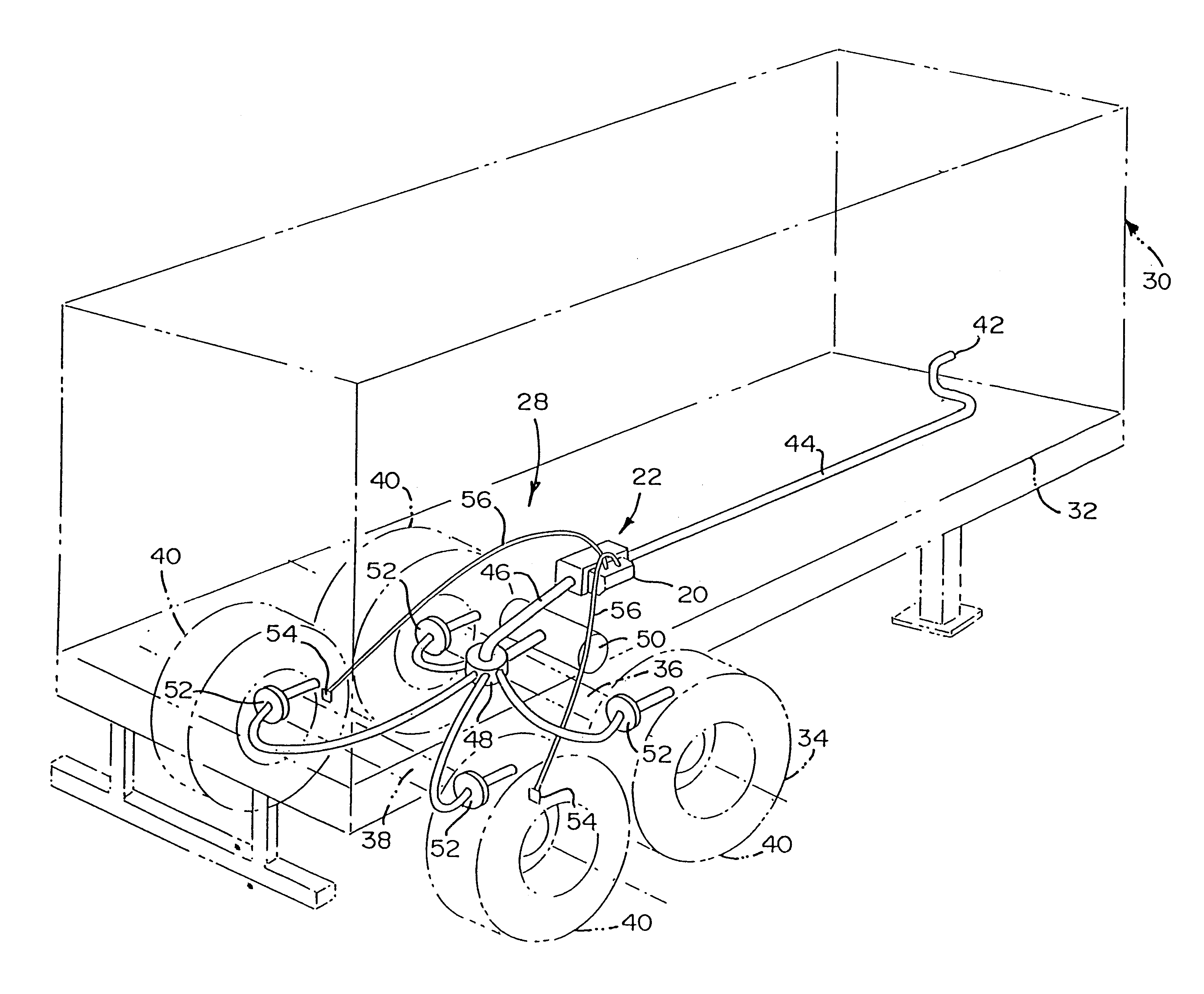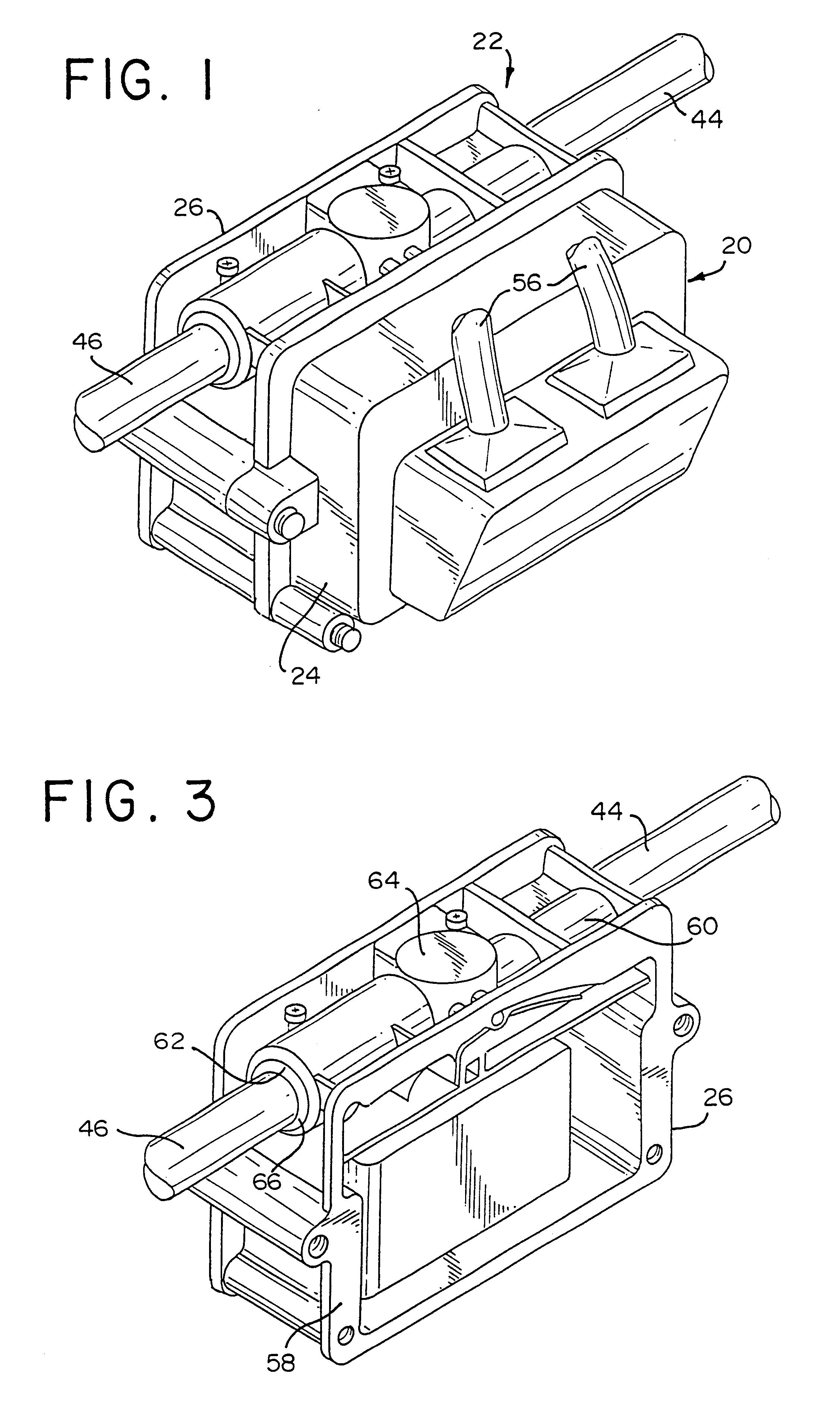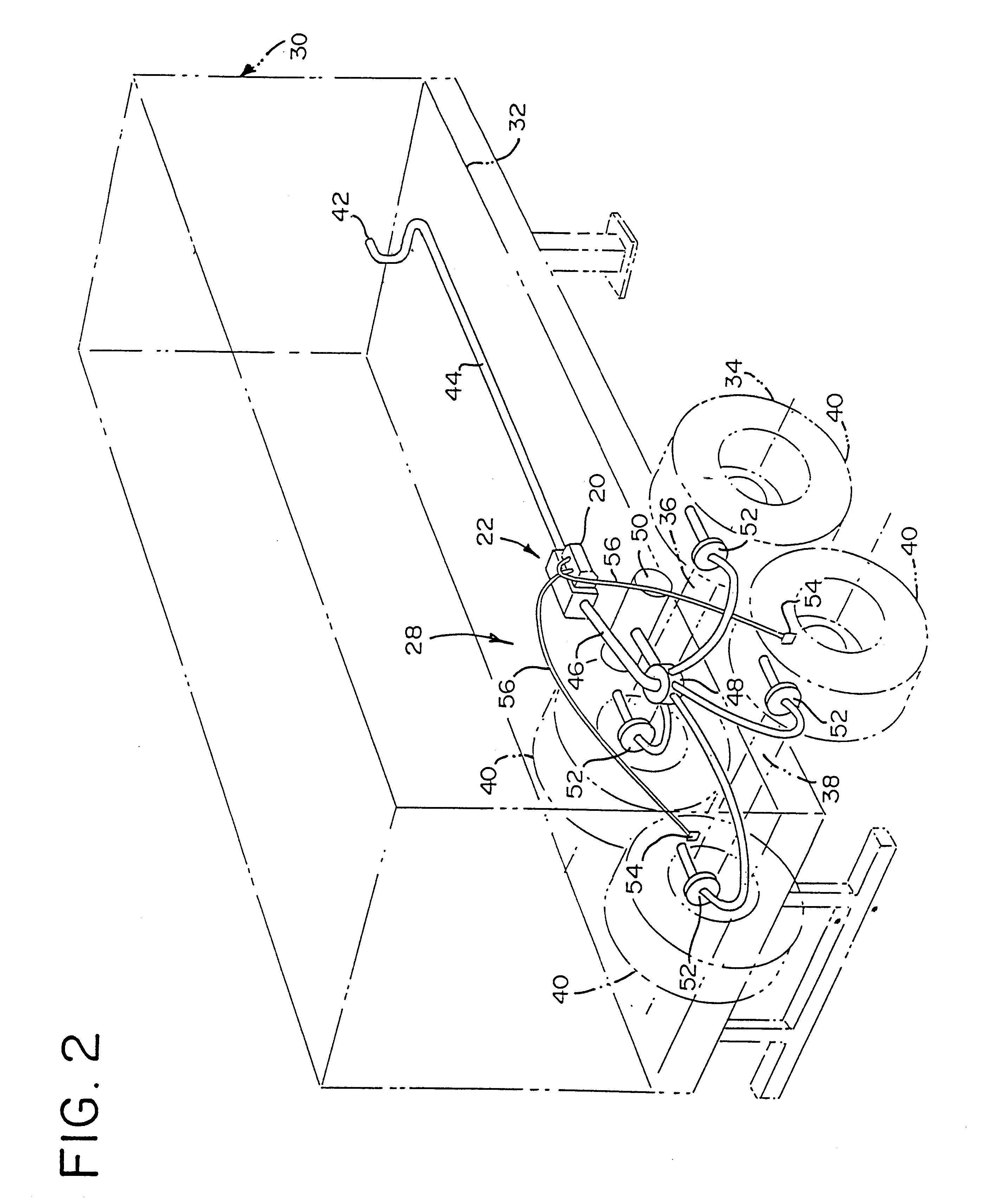Control module for a brake system for a semi-trailer
a control module and semi-trailer technology, applied in the direction of brake safety systems, vehicle components, braking systems, etc., can solve the problems of slowing down, driver can press too hard for the prevailing conditions, slowing down, etc., to achieve rapid reduction of brake pressure, better wheel control, and the effect of reducing the pressur
- Summary
- Abstract
- Description
- Claims
- Application Information
AI Technical Summary
Benefits of technology
Problems solved by technology
Method used
Image
Examples
second embodiment
Directing attention to the PCM 26 in FIG. 7, the PCM 26 includes a first 2-way solenoid valve 104 which is normally open, and a second 2-way solenoid valve 106 which is normally closed.
The first 2-way solenoid valve 104 has a housing having an inlet port 108 and an outlet port 110. A plurality of windings are housed within the housing and encircle a plunger which is biased away from the inlet port 108 by a spring and can be selectively moved against the inlet port 108 when the 2-way solenoid valve 104 is energized. In the non-energized position, the 2-way solenoid valve 104 is open such that the air signal can flow therethrough. That is, the inlet port 108 and outlet port 110 are open in that the plunger is not biased against the inlet port 108.
The second 2-way solenoid valve 106 has a housing having an inlet port 112 and an outlet port 114. A plurality of windings are housed within the housing and encircle a plunger which is biased against the outlet port 114 by a spring and can be...
first embodiment
The PCM 26 also includes a novel quick exhaust valve 82 which is integrated therein and is identical in structure to the quick exhaust valve 82 used in the PCM 26. Identical reference numerals are used to denote the elements of the quick exhaust valve 82.
A line 116 is connected to the supply port 60 and has a first branch line 116a connected to the inlet port 108 of the first 2-way solenoid valve 104 and a second branch line 116b connected to the inlet port 84 of the quick exhaust valve 82. A line 118 is connected to the outlet port 110 of the first 2-way solenoid valve 104, and has a first branch comprised of two lines 118a, 118b connected to the inlet port 112 of the second 2-way solenoid valve 106, has a second branch line 118c connected to the exhaust inlet port 86 of the quick exhaust valve 82, and a third branch line 118d connected to the delivery port 62 of the PCM. A line 120 is connected to the outlet port 114 of the second 2-way solenoid valve 106 and has a first branch li...
third embodiment
During normal braking using the PCM 26 shown in the third embodiment, the following steps are effected:
1. Signal air passes in the supply port 60 of the PCM 26, and travels along lines 152, 152a to the inlet port 130 of the non-energized normally open 2-way solenoid valve 122.
2. The signal air passes through the inlet port 130 of the 2-way solenoid valve 122, around the plunger and out the outlet port 132 of the 2-way solenoid valve 122.
3. The signal air passes along line 154 and through the inlet port 134 of the non-energized 3-way solenoid valve 124, around the plunger and out the outlet port 136.
4. The signal air then passes along lines 156, 156a, through the quick exhaust valve 128 by traveling in the inlet port 144, around the diaphragm and out the open two-way port 146, to the delivery port 62 of the PCM 26 and then to the relay valve 48.
The check valve 126 is not used during application of the brakes in normal braking. Pressure on the second port 142 side of the check valve 1...
PUM
 Login to View More
Login to View More Abstract
Description
Claims
Application Information
 Login to View More
Login to View More - R&D
- Intellectual Property
- Life Sciences
- Materials
- Tech Scout
- Unparalleled Data Quality
- Higher Quality Content
- 60% Fewer Hallucinations
Browse by: Latest US Patents, China's latest patents, Technical Efficacy Thesaurus, Application Domain, Technology Topic, Popular Technical Reports.
© 2025 PatSnap. All rights reserved.Legal|Privacy policy|Modern Slavery Act Transparency Statement|Sitemap|About US| Contact US: help@patsnap.com



